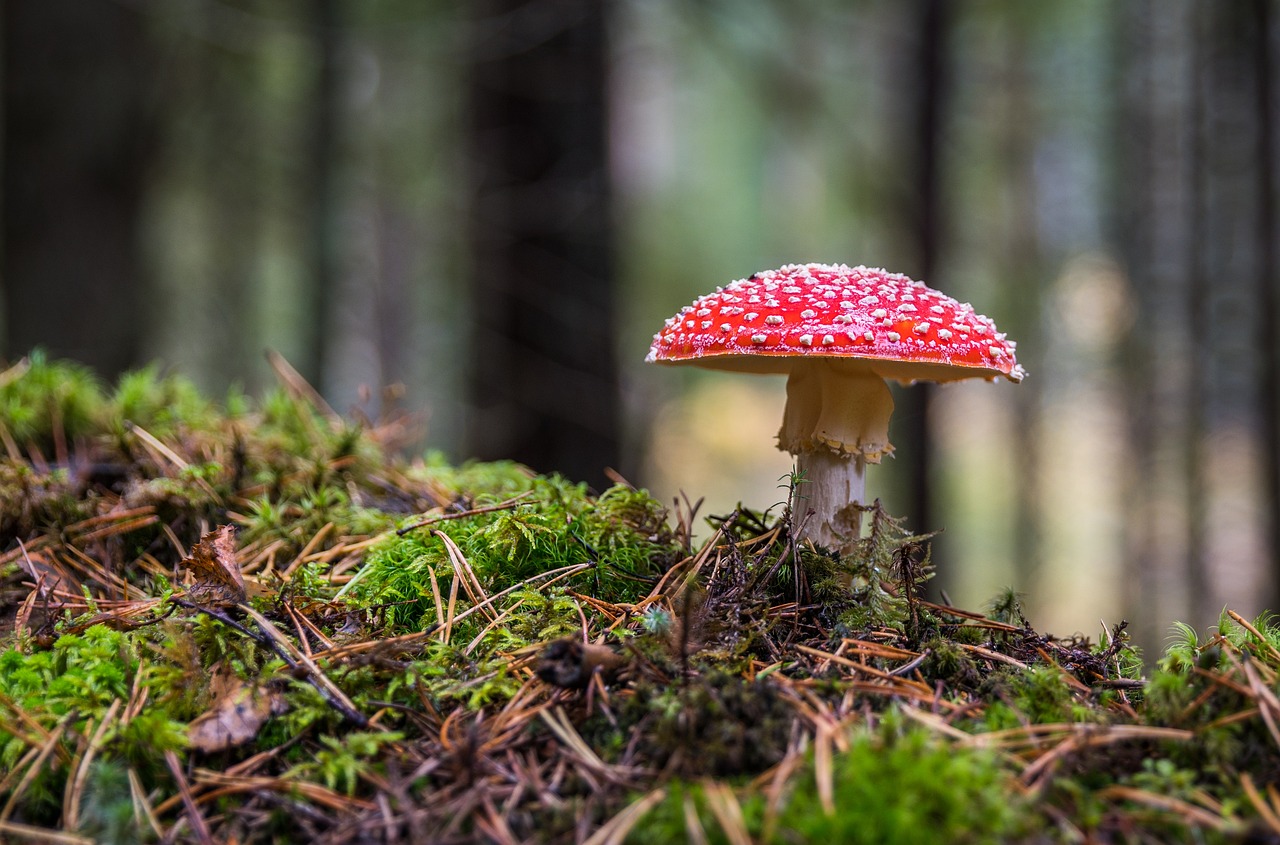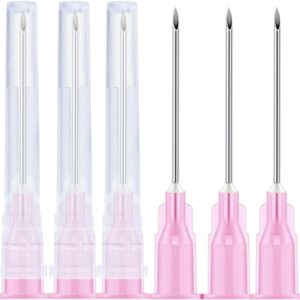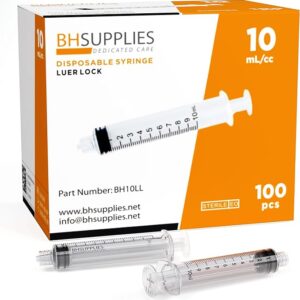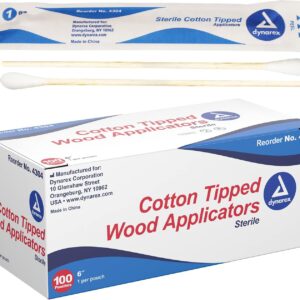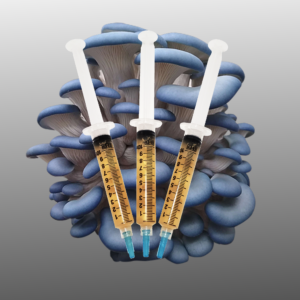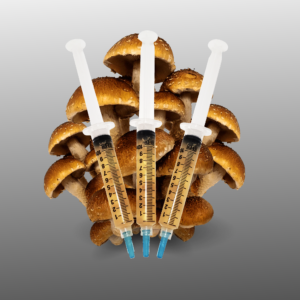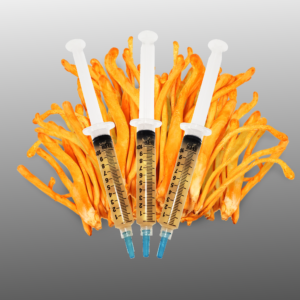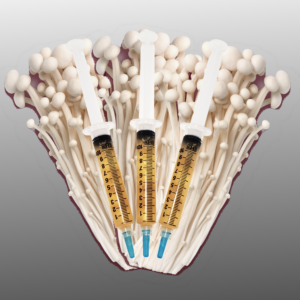Chemical Composition: Ibotenic acid and muscimol are neuroactive compounds found in certain mushrooms. These substances belong to a class of compounds known as isoxazoles.
Mushrooms Producing Ibotenic Acid and Muscimol: The primary mushroom species associated with ibotenic acid and muscimol are from the Amanita genus. Notable examples include:
- Amanita muscaria (Fly Agaric):
- Identification: Recognized by its distinctive red cap adorned with white patches, Amanita muscaria is a medium to large-sized mushroom with a central stem and white gills.
- Chemical Content: Amanita muscaria contains both ibotenic acid and muscimol.
- Amanita pantherina (Panther Cap):
- Identification: Similar in appearance to Amanita muscaria but often with a paler cap and a more slender stem.
- Chemical Content: It also contains ibotenic acid and muscimol.
Chemical Transformation: Ibotenic acid is a prodrug, meaning it undergoes chemical changes in the body. When ingested, ibotenic acid is decarboxylated, a process that removes a carboxyl group, resulting in the formation of muscimol. Muscimol is responsible for the psychoactive effects associated with these mushrooms.
Potential Medicinal Uses: Research on the medicinal properties of Amanita muscaria and related mushrooms is limited, and these mushrooms are not widely used for therapeutic purposes. However, some studies and traditional practices suggest potential areas of interest:
- Traditional Shamanic Use:
- In some indigenous cultures, Amanita muscaria has been used in shamanic rituals for its psychoactive effects, believed to induce altered states of consciousness.
- Neuroprotective Properties:
- Limited studies suggest that muscimol may have neuroprotective properties. However, further research is needed to understand the mechanisms and potential applications.
- Treatment of Neurological Disorders:
- Some anecdotal reports and cultural practices suggest that Amanita muscaria has been used in the treatment of certain neurological conditions. However, scientific evidence supporting these claims is lacking.
Cautions and Risks: While Amanita muscaria has a long history of cultural use, caution is crucial due to its toxic potential. The effects can be unpredictable, and improper preparation or consumption can lead to severe toxicity. The toxic properties include muscimol and ibotenic acid, but also other harmful compounds.
Identification and Foraging Tips: For those interested in foraging mushrooms, it’s essential to be cautious and well-informed. When identifying Amanita muscaria or related species:
- Distinctive Features:
- Recognize the distinctive features such as the red cap with white patches, the central stem, and the white gills. However, be aware that color variations can occur.
- Veil Remnants:
- Note the presence of veil remnants on the stem, which may resemble a ring or skirt.
- Spore Print:
- Take note of the spore print, which is white for Amanita muscaria.
- Expert Guidance:
- Seek guidance from experienced foragers or mycologists for accurate identification.
Conclusion: While ibotenic acid and muscimol found in Amanita muscaria have a cultural and historical significance, caution is paramount due to the toxicity of these mushrooms. Scientific research on their medicinal uses is in its infancy, and any potential benefits must be approached with skepticism. If considering the use of these mushrooms for any purpose, it is advisable to consult with healthcare professionals and rely on well-established, evidence-based practices.
-
100 Pack -18Ga 1.5inch(38mm) Dispensing Needles with Luer Lock, Individually Packaged
-
10ml Luer Lock Tip Syringes (No Needle) – Sterile, Individually Wrapped – 100 Syringes
-
30 Pack Plastic Petri Dishes with Lids, 90 x 15mm
-
6-Inch Sterile Cotton Tipped Applicators 1 Box of 100 Pouches, 1 per Pouch
-
Agar Agar Powder, 1lb
-
Blue Oyster Liquid Culture
-
Chestnut Mushroom Liquid Culture
-
Cordyceps militaris Liquid Culture
-
Enoki Mushroom Liquid Culture

